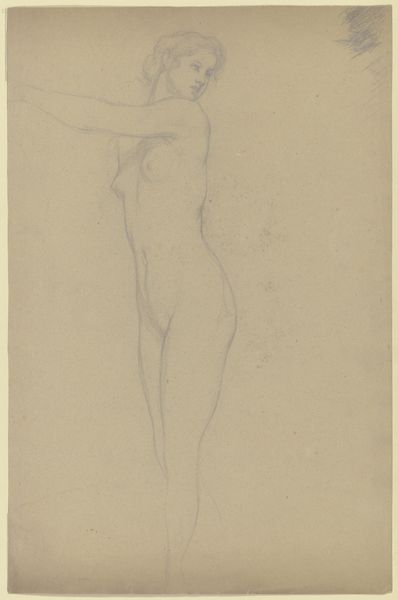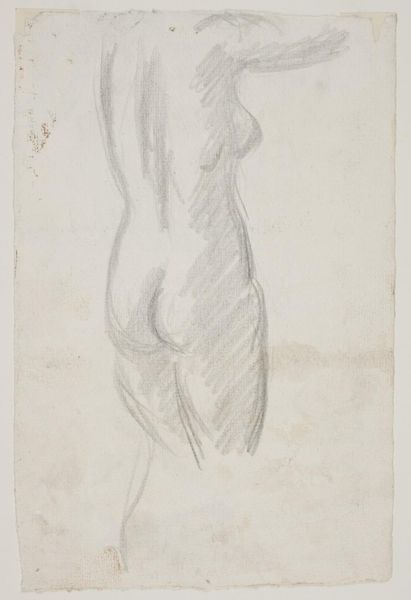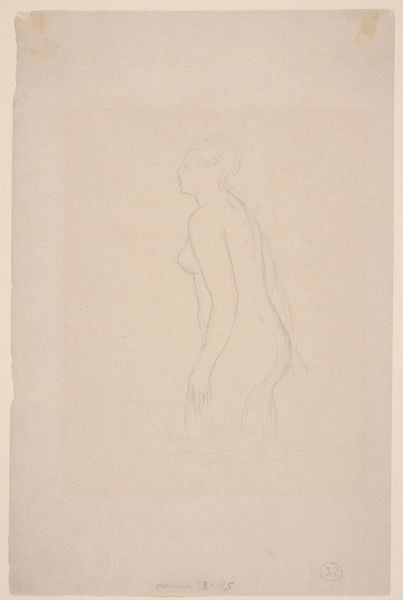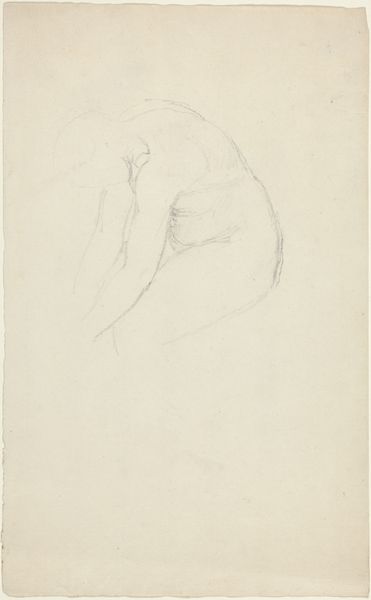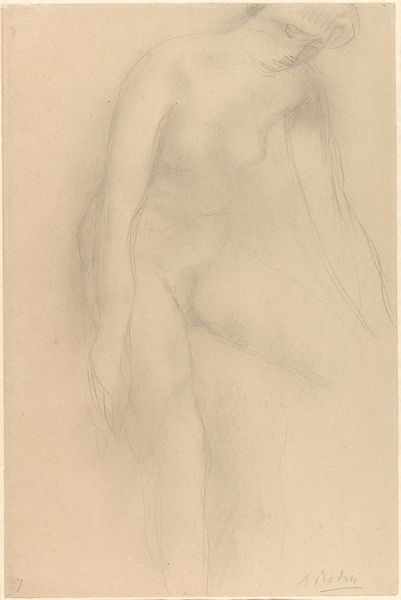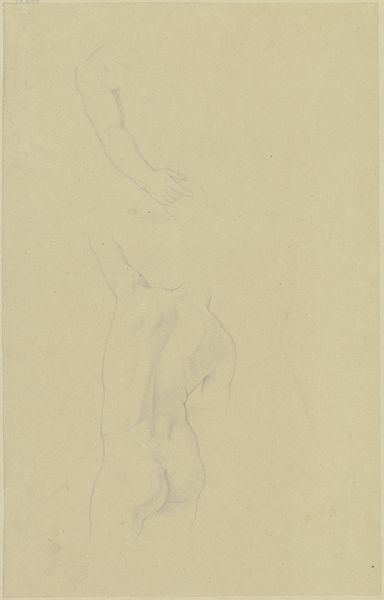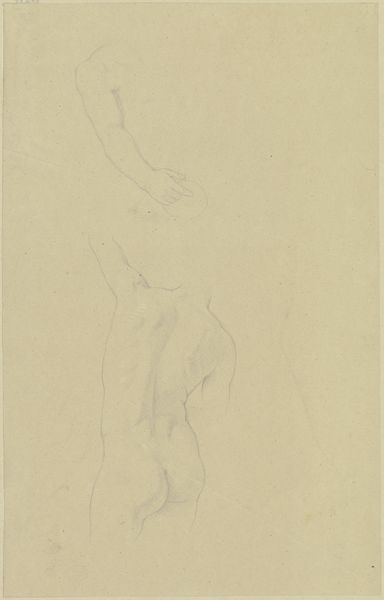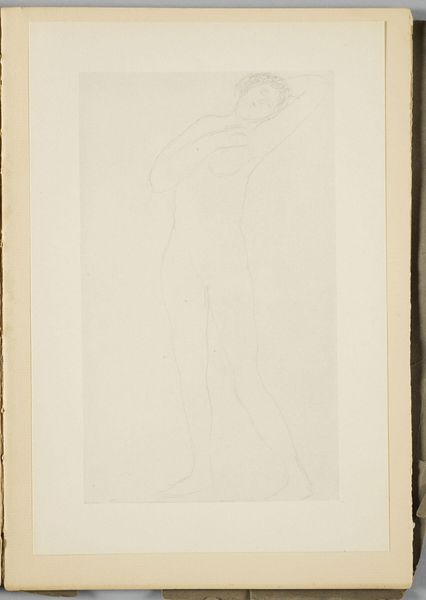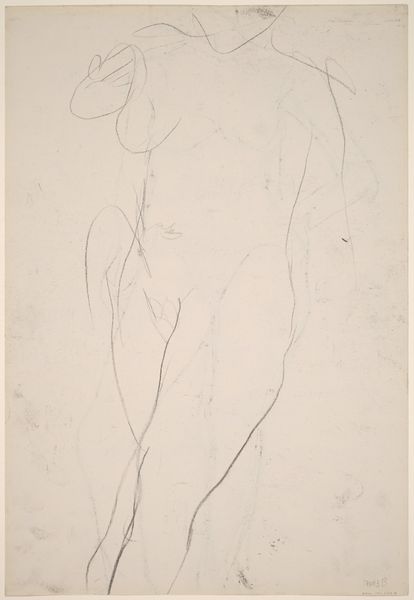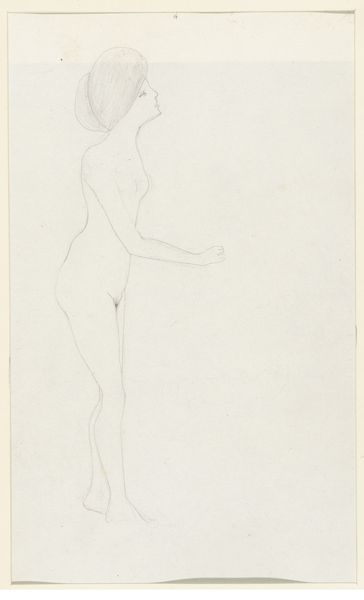
drawing, pencil
#
pencil drawn
#
drawing
#
light pencil work
#
pencil sketch
#
etching
#
pencil
#
symbolism
#
pencil work
#
nude
Dimensions: height 638 mm, width 484 mm
Copyright: Rijks Museum: Open Domain
Curator: What we're looking at now is Théophile Alexandre Steinlen's "Lichte schets van een vrouwelijk naakt," a pencil drawing created in 1906. It's an incredibly subtle work, almost whisper-like in its execution. Editor: Yes, "whisper-like" is perfect! It feels unfinished, ghostly almost. There's a real intimacy in the light touch, like a memory fading. What I find interesting is how Steinlen dares to suggest the form rather than define it. It reminds me a bit of Rodin’s unfinished sculptures in its evocative incompleteness. Curator: Precisely. Steinlen was working in a period of significant social and artistic change. Nudes, of course, have a long history in art, but in the late 19th and early 20th centuries, there was increasing focus on naturalism and individual expression. A piece like this subtly challenges traditional academic representations. It almost seems he wanted to capture a fleeting essence. Editor: I agree. It feels deeply personal, almost private, as if we’re looking at something not intended for the public gaze. And it's the symbolism, perhaps unintentionally, that holds a unique allure. This delicate treatment shifts it away from mere observation and pushes it towards feeling. It makes one question how such simple sketches reveal so much about a woman without telling us anything specific. Curator: The art world then grappled with portraying modernity honestly. By avoiding idealization, Steinlen connects to a broader social conversation about the female figure—how the image relates to concepts such as the female working class and domestic roles prevalent at the time. This sketch becomes a gentle, introspective commentary. Editor: It does transcend just the aesthetic, doesn’t it? I’m now struck with the sense that he respects the form. No fanfare. Just this gentle observation. As I linger longer, I appreciate how profoundly expressive a simple line can be. Curator: Agreed. It invites a contemplative viewing experience. Editor: Indeed. And in today's age of hyper-visibility, the elusiveness is its strength.
Comments
No comments
Be the first to comment and join the conversation on the ultimate creative platform.
